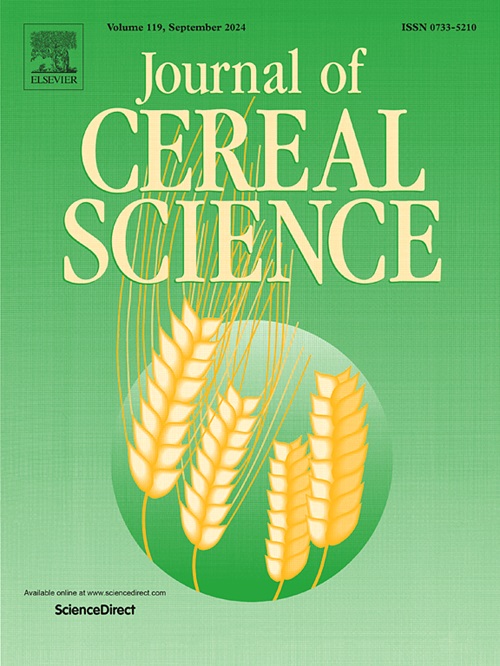揭示从藜麦胚芽中提取的新蛋白质浓缩物:探索基于植物的替代蛋白质
IF 3.7
2区 农林科学
Q2 FOOD SCIENCE & TECHNOLOGY
引用次数: 0
摘要
经物理处理的生藜麦胚芽(RQG)采用锤磨法进一步精制,并根据粒度分为细(100 μm)、中(100 - 300 μm)和粗(300-500 μm)三个部分。然后将其脱脂,生产藜麦胚芽蛋白浓缩物(QGPC)。该研究评估了颗粒大小和脱脂对物理化学、功能和流变性质的影响。藜麦蛋白质是一种完整的蛋白质,集中在胚芽部分。QGPC的蛋白质含量为43.04%,高于RQG(35.43%)。分析表明,粗粒组分的蛋白质和矿物质含量较高,而亮度值随粒径的减小而增加。QGPC的保水容量(WHC)为2.78 g/g,持油容量(OHC)为3.10 g/g。粗馏分具有较强的发泡能力和稳定性。本研究制备的QGPC产率超过70%,具有独特的功能特性,是一种很有前景的靶向食品开发原料。本文章由计算机程序翻译,如有差异,请以英文原文为准。
Unveiling a new protein concentrate derived from quinoa germ: Exploring a plant-based alternative protein
Raw quinoa germ (RQG), processed physically, was further refined using hammer milling and fractionated based on particle size into Fine (<100 μm), Medium (100–300 μm), and Coarse (300–500 μm) fractions. These were then defatted to produce quinoa germ protein concentrate (QGPC). The study assessed the influence of particle size and defatting on physicochemical, functional, and rheological properties. Quinoa protein, a complete protein, is concentrated in the germ portion. QGPC showed a higher protein content (43.04 %) compared to RQG (35.43 %). Analysis revealed higher protein and mineral content in coarse fractions, while brightness values increased with decreasing particle size. QGPC demonstrated superior functional properties, including a water-holding capacity (WHC) of 2.78 g/g and oil-holding capacity (OHC) of 3.10 g/g. Coarse fractions exhibited enhanced foaming capacity and stability. The study produced QGPC with a yield exceeding 70 %, characterized by unique functional properties, making it a promising ingredient for targeted food product development.
求助全文
通过发布文献求助,成功后即可免费获取论文全文。
去求助
来源期刊

Journal of Cereal Science
工程技术-食品科技
CiteScore
7.80
自引率
2.60%
发文量
163
审稿时长
38 days
期刊介绍:
The Journal of Cereal Science was established in 1983 to provide an International forum for the publication of original research papers of high standing covering all aspects of cereal science related to the functional and nutritional quality of cereal grains (true cereals - members of the Poaceae family and starchy pseudocereals - members of the Amaranthaceae, Chenopodiaceae and Polygonaceae families) and their products, in relation to the cereals used. The journal also publishes concise and critical review articles appraising the status and future directions of specific areas of cereal science and short communications that present news of important advances in research. The journal aims at topicality and at providing comprehensive coverage of progress in the field.
 求助内容:
求助内容: 应助结果提醒方式:
应助结果提醒方式:


